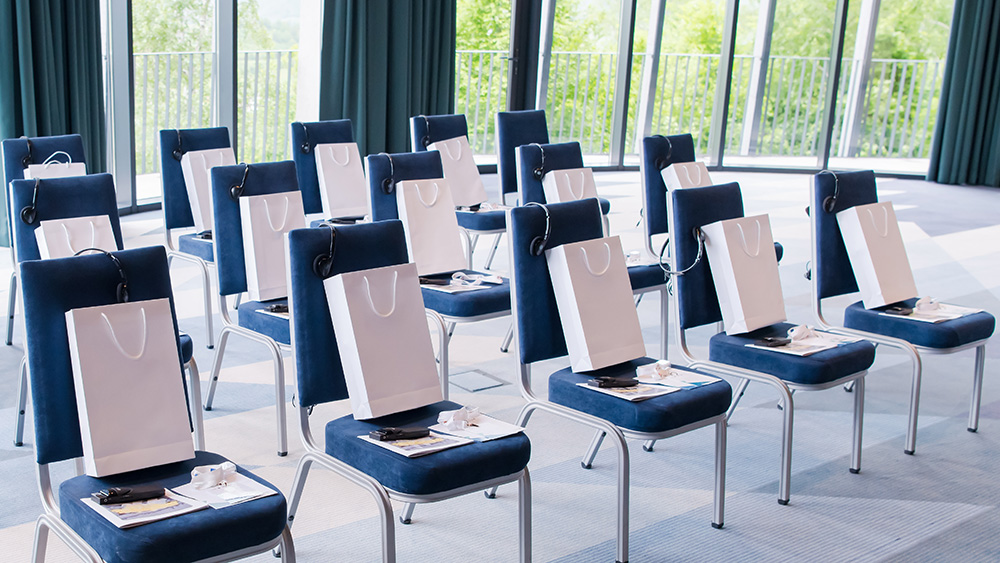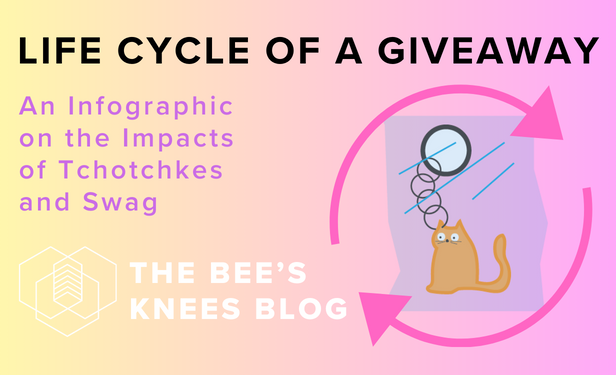
According to the latest analysis from the Advertising Specialty Institute, distributor sales of promotional products, including event giveaways, in 2023 set a new record, reaching more than $26 billion in sales.
Last year, a Reddit user who was helping to plan for a booth at a conference asked the online academic community on the social website for suggestions on swag. “We are trying to come up with swag people will actually like/keep,” she posted. “Ideas?”
More than 100 people shared details on the best swag they had ever received. Their most memorable and useful “stuff we all get” (swag) ran the gamut from ceramic coffee mugs to reusable metal water bottles to pens, USB drives, laptop camera lens covers, notebooks, reusable white board stickers, branded decks of playing cards, and socks. A Swiss army knife was the favorite swag of one user, and he begged the original poster: “Please no more: bags, pens, water bottles, shitty plastic flashlights, lanyards, mugs, or buttons.”
While there were plenty of responses that echoed his sentiment to eschew cheap tchotchkes, there was only one solitary community member who brought up sustainability. “90% will end up in the trash, so I’d say none or opt for consumables,” she wrote. But she also added: “Or try to think of something that would be useful during the conference — a small notebook, hand sanitizer, snacks/candy, fidget toys, maybe a Tide pen for an accidental coffee spill — and maybe offer them so that people can take what they want but don’t give everything to everyone.”
If this sample is any indication, people — or at least academics — still like swag, as long as it can be put to practical use. Which is good news for the swag industry — according to the latest analysis from the Advertising Specialty Institute, distributor sales of promotional products in 2023 set a new record, reaching more than $26 billion in sales.
But not such good news for the environment. It’s not just the manufacturing of the items that exacts a toll on the environment; there’s also the packaging, transportation, and distribution requirements that contribute to its footprint — which fly under the radar for most swag recipients. Honeycomb Strategies, a sustainability solutions company for the events industry, has created an infographic that shines a light on the life cycle of a shipment of swag — its journey and its impact — from manufacturing to post-event.
For event organizers and exhibitors who fall in the swag — something we all give — camp, there are more sustainable alternatives, like Ethical Swag, which Convene wrote about in 2021, and Merchery.
And there’s a way to forego swag but still make an impression on attendees and customers. Elizabeth Segran writes in a Fast Company story — “Can We Finally Kill Off Cheap, Disposable Conference Swag?”— that the “pandemic was a reset button, prompting society to reevaluate many aspects of life…. Brands, manufacturers, and consumers now have an opportunity to rethink whether we want these cheap, planet-destroying items in our lives.”
Givsly, a company that helps organizations provide recipients with the means to give money to a cause of their choice instead of receiving a material item, is one option explored in the article. “Many people wish they could donate more to charities, Givsly founder and CEO Chad Hickey told Fast Company. “This approach allows them to support causes on someone else’s dime.” And not at the expense of the planet.
Michelle Russell is editor in chief of Convene.
Life Cycle of a Giveaway
Click the image below to read Honeycomb’s Life Cycle of a Giveaway infographic.

